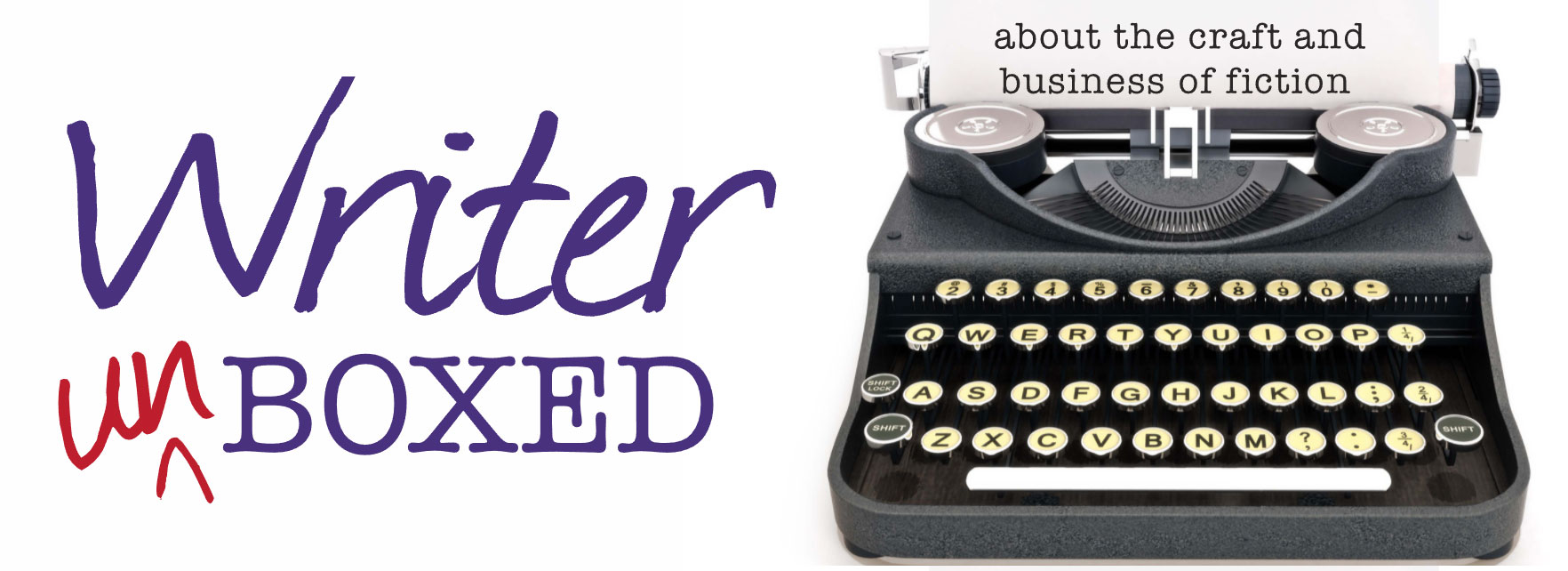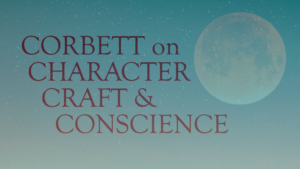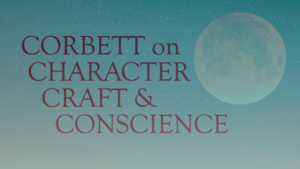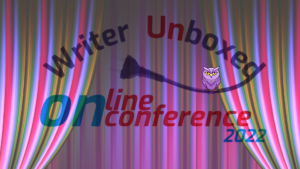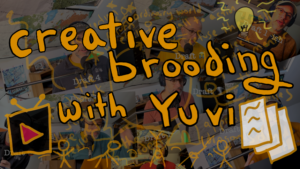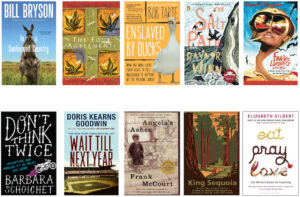Humor
In the never-ending quest for snappy repartee in our fiction, we often overlook the ways in which our own personal exchanges with friends and family members provide us with creative language we can use (i.e., steal) for our stories.
Using idioms to freshen up dialogue is hardly a revolutionary idea. But many idioms have become so commonly and widely used they amount to clichés: Look what the cat dragged in. Better get cracking. Gotta keep the wolf from the door. [If you’re looking for a source for such expressions, trite and not so trite, check out this idiom dictionary.]
The problem with some of our personal sayings is that they are so dependent on a unique context connected to our own experience that they’ll likely require at least some explanation for the reader to understand what’s being said (let alone why). And as we all know, explanation can be deadly.
That said, this problem isn’t insurmountable—you just need to select the expressions that require the least explanation—or come up with your own. Just as you and others have created these expressions from experience, so too can your characters.
As an example, in my most recent novel two friends have created a game where they make up names for dwarves who “didn’t make the cut” for Disney’s Snow White and the Seven Dwarves: Salty. Slimy. Punchy. Stuck. (My wife and I now, whenever we find ourselves using some particularly vivid adjective, will typically remark, “There’s another one that didn’t make it.”)
As the idea for this post began matriculating in my mind, I began to pay more attention to all the little sayings my wife, my friends, my family and mere acquaintances bandy about in the course of any given day. It dawned on me that maybe I was overlooking a rich source of material staring me in the face.
The fact that these expressions are rooted in day-to-day experience with someone else means that, if we’re going to try to create such expressions from scratch, we’ll have to imagine deeply such a quotidian existence for our characters. That can be laborious—all the more reason to pilfer from one’s own life.
With that in mind, I thought I’d run off some of the expressions I wrote down as they either came up in conversation or arose in memory.
Marital Maxims
I doubt any of you who are married or in a long-term relationship don’t have buzzwords, witticisms, or other expressions developed in your life together. Given these catch phrases likely developed in unique situations, you will likely have to recreate such a situation between your characters to make the expression work.
Some examples:
Penguin Fight!
Said when my wife and I disagree on something not terribly serious, but we can’t reach an accord. One or the other will announce, “Penguin Fight!” and we will approach each other face-to-face, our arms pressed close to our sides—to mimic fins—and raucously slap each other’s arms. Any tension that might have arisen magically vanishes.
Hashtag: Goals
Said when one of us expresses an intent to finally get to an unpleasant task put off for too long. (Me: “I guess I’ll go out and clean the gutters before it rains again.” She: “Hashtag: Goals.”)
It’s in the vows
Said when one of us agrees to do […]
Read MoreYes. We’re going to talk about those circular muscles that open and close passages in the body. It’s going to get silly.
What’s the deal with sphincters?
There are over 50 different kinds of sphincters in your body (50!), all busily doing their job without any glory. We’ve all heard of the biggies—esophageal, anal, and urethral—because we ingest food and eliminate waste every day, and their successes and failures are a big part of our quality of life.
But there’s also the pyloric sphincter, which keeps our food in our stomachs until it’s thoroughly mixed with digestive juices. Sphincters cause our irises to contract and dilate in response to changes in light. Pre-capillary ones regulate the flow of blood into our tiniest blood vessels, and there are an estimated 10 billion capillaries in each of our bodies.
So we have billions (billions!) of sphincters in our bodies and we consciously control only two of them: the external urethral and anal sphincters. The rest are constantly working to regulate our digestion and waste elimination, the flow of light, and the movement of blood and bile and pancreatic juices (these last two through the awesomely named Sphincter of Oddi); they prevent air from getting into our esophagus when we breathe, and food from getting into our lungs when we eat.
As Hank Green says in his video, Three reasons to love sphincters (at the bottom of this post):
Sphincters don’t get tired, which is an amazing thing. They squeeze. Like, your butthole is squeezing all the time. If you squeezed any other muscle in your body it would get exhausted. But not your butthole! It’s one of the most efficient muscles in your body so it can stay clenched all the time and never get tired. Hooray! Hooray for sphincters!
Why am I almost as excited about sphincters as Hank Green?
Because I’m tired.
It feels like so many of my life muscles have been non-stop contracting and never releasing since COVID and I am weary of persevering. I was on the verge of writing a super-whiny-but-hopefully-charming post when I saw Green’s sphincter-rave. It is both silly and true and it nudged me out of whine-mode and into inspiration-mode.
I want to be strong like a sphincter.
Tireless. Efficient. Knowing when to contract, when to relax, when to keep things flowing, what to prevent, and when to contain. And just doing it. Automatically.
What does this have to do with writing?
Sphincters work by contracting to contain things and relaxing to let things flow. Think of your writing process. It likely has a rhythm of collecting (ideas, writing advice, research, story beats, character bios) and releasing (freewriting, collaging, drafting).
We are advised not to edit too much when we’re in drafting mode (i.e., don’t contract when your job is to relax).
Sometimes we do a word vomit.
We write crappy first drafts.
We know how glorious it is when we’re in flow mode and the ideas and insights and words practically spill out of you. But we also know that feeling of straining to push out words.
Really?
Yes.
The phrase Be strong like a sphincter was enough to nudge me out of self-pity this week. Maybe it will help you in some way, too. And if not, I hope this made you smile.
What gets you out of your head […]
Read More
I’ve often shared here at Writer Unboxed one of my favorite quotes from Saul Bellow: “Writers are readers inspired to emulation.”
A corollary to this, and something I often say during my classes, is that the best teachers you will find concerning your writing are the writers who’ve inspired you. You can learn any number of techniques from writing guides, but seeing them in operation in the context of a work you admire is really the best way to let the lesson sink in.
I was reminded of all this recently as I devoured Jess Walter’s latest, The Angel of Rome. The short stories in this collection are all delightful in a way that does, indeed, inspire, and I thought I’d share some of the things that made me put the book aside for just a second to make a note.
Great Story Ideas
Each of these stories concerns unique but eminently human situations. A sampling:
A young woman who inherits her mother’s beauty is never told who her biological father is, and when she ultimately learns the truth, the lesson runs deeper than she could have imagined (“Mr. Voice”).
A high school science teacher confronts science denialism in the form of a student whose mother is stunningly attractive (“Magnificent Desolation”).
A young woman suffering from cancer reconnects with her wild, reckless, irresponsible ex in a last-ditch effort to escape the prison of pain and fear her disease has imposed on her (“Drafting”).
A young man studying Latin at the Vatican in Rome under false premises—he lied about his command of the language and his interest in the priesthood to please his mother—stumbles onto a film set and meets the person who will change his life (“The Angel of Rome”).
A young gay man, having to deal with his demented father—a womanizing drinker, smoker, and hell-raiser—finds an unlikely solution to his problem at a converted motel in upstate Idaho (“Town & Country”).
A young woman with a troubled past meets a famous actor at a party in Bend, Oregon, and educates him on what it means to be a “normal” person (“Famous Actor”).
Two climate scientists vying for the same teaching job at a Mississippi college befriend a young, mixed-race gay man struggling with his identity, and together they confront their horrors–the dying planet, the difficulty of being true to oneself, and why the latter matters even if the first proves true (“The Way the World Ends”).
As you can imagine, these thumbnails barely do justice to the stories themselves, but the twists and surprising revelations in each of them cannot be disclosed with greater specificity without ruining the reading experience for those of you who decide to pick up the book (which I, of course, highly recommend).
In particular, Walter is devoutly loving in his portrayal of even the most unpleasant characters–but how he does that would consume another whole post. So instead, allow me to move on to:
Bold Openings
Several of the stories begin in ways that can’t help but make you want to keep reading. Examples:
Mother was a stunner.
She was so beautiful men would stop mid-step on the street to watch her go by. When I was little, I would see them out of the corner of my eye […]
Read MoreI see you, word nerds. I know who you are. You’re the ones who can’t drive by a billboard with a grammar mistake (“In a class of it’s own”) without visibly cringing. Who have memes like this as your screen saver. Who keep Dreyer’s English in your nightstand and regularly reread and analyze passages like it’s the King James Bible.
I see you, and I feel you.
As an editor I may or may not derive an inordinate amount of amusement from malapropisms, dangling modifiers, quotation marks misused for emphasis that call the author’s “authority” into question, and comically clumsily translated signs like these…but I know I am not alone.
A few posts ago I wrote about words you’re probably using wrong, and from the comments it seemed to hit a chord with my fellow word nerds, so here’s another ridiculous helping of word nerdery to delight you, enlighten you, and perhaps let you bask in superiority, chortling at those poor benighted fools who violate the vernacular. (Spoiler, though—judging from my 15 years at the beginning of my editing career as a Big Six copyeditor, that’s most of us at some time or another.)
Misusing our language commits a cardinal sin of writing, which is to muddy your intentions and the readers’ experience of your story. Knowing how to use the main tool of our business, language, allows you to be a more effective storyteller.
So with that lofty goal in mind…let’s get down and nerdy with it.
Picking Apart Parts of Speech
You don’t “feel badly” for someone, unless you’re trying to have a feeling for them and you just can’t swing it; you simply feel bad for them. (Probably because of their substandard grammar, I’m betting.)
And you don’t cap a list of progressively important things with “most importantly,” unless you’re saying it with the air of a self-satisfied douchebag—it’s just “most important.”
I might wonder hopefully if you already knew that, but I wouldn’t write “Hopefully you knew that” unless I’m referring to the optimistic quality of your knowing.
Something can be “on top of” something else, or “over it,” or even “over-the-top” (as this post, in fact, could be accused of being), but not “overtop” unless you’re using it as a colloquialism in a character’s point of view. “Overtop” is not a preposition, any more than “underbottom” or “throughmiddle” are.
While we’re on the topic, “any more” referring to quantity should be two words, not one, in usages such as the last sentence. “Anymore” is only for time, despite that for some philistines these usages are supposedly interchangeable (but never supposably).
My examples have taken a turn for the worse—which is a worst-case scenario for some readers, if worse comes to worst.
If you haven’t as yet tuned out (never “as of yet”—but you already knew that, didn’t you?), let’s move on to other troubling misusages.
Fallacious phraseology
If you’re offering someone an ARC of your book, it’s an advance copy, not an advanced one (unless you are distinguishing it from a remedial edition you give to your less erudite friends).
If you’re letting it all hang out you’re buck naked, not butt naked (no matter how intuitive the latter may seem, given the fundamental involvement of one’s derriere). And no judgments […]
Read MorePhoto by Gabriel Pompeo: https://www.pexels.com/photo/father-and-child-playing-with-a-pig-4676941/
We are industrious sentence-builders here at WU, but sometimes motivation fizzles, ardor fades, and a brave sentence’s beginning loses faith at its end. Never fear! In the spirited spirit of Mad Libs, we will build a story of stout sentences, broad-shouldered and charismatic.
Here’s the deal: I’ll list a number of story-building structures, and provide one sentence to light the fuse. You, not unattractively drooling in anticipation, will mentally write the next. And then I’ll reveal the “correct” sentence, since I am driving this careering sleigh. Not exactly democracy, but hey, we’re used to that by now. Unto the breach, dear friends:
Prologue
Kristy Silden watched, with a mixture of revulsion and fascination, the heavily lipsticked piglet dance in its stall.
She was fascinated that the pig had so precisely applied the lipstick, but revolted that the shade was so inappropriate for its pink spring skin.
Setting (Years Later)
The little farm, now hers, lay in a narrow valley, with the Saskatchewan mountain ranges looming on all sides.
She knew there were no mountains in Saskatchewan, but why fetter a wheeling imagination?
Foreshadowing
Ever since she’d seen Claudia, her beloved pig dancing those years ago, she’d wondered if that memory was a dream—and Claudia had aged with that memory.
But Claudia had always been there, and always would be—wouldn’t she?
Inciting Incident
Kristy watched Claudia in the pen, tottering on her once sturdy legs—could she really be that old?
Growing up together, Kristy thought of Claudia as a best friend, but most pigs only live to be 12 or so; Claudia was 11.
Call to Adventure
Kristy finished the Farm Finaglings article about the Berkeley scientists using CRISPR to edit a pig’s genes.
Kristy answered a ringing in her head: “This is Adventure calling; wanna go for a ride?”
Conflict
Kristy and Claudia argued about which vehicle was the best to get to Berkeley: The trusty ’52 Chevy truck her dad had left her (and which could carry a lot of slop), or the 2017 Prius hybrid.
They opted for the Prius, since Claudia couldn’t drive a stick; they could pick up slop at their stops.
Saving the Cat
The highway humming, Kristy idly wondered if a cat would have been a better companion than Claudia.
She made a mental note to start saving up for a cat.
Microtension
Kristy wrinkled her nose, and turned to Claudia, finding that Claudia had wrinkled her snout and turned to her.
They both burst into giggles, though Claudia’s were more of a snurfle.
Dilemma and Flashback
Saskatoon, Edmonton, down into the States to Montana—west to Seattle and south?
Quick diversion to Vegas instead—she’d won $35 on a nickel slot her dad let her play when she was fifteen, and the memory sung.
Man in a Hole
They had to creep slowly by a worker in a manhole in Reno.
Kristy thought he looked a lot like Ryan Reynolds, but Claudia just snorted.
Ordeal
Finally made it to the Berkeley lab, but Claudia was clearly slipping.
Kristy and Claudia’s eyes locked as the pig lie on the table; Kristy could see the faint trace of lipstick in Claudia’s last smile.
The Reward
The cloning was successful; through the sadness, a squealing little piglet was worth the month’s wait.
No Claudia to help drive home, no Claudia at all—but man, this Clara had more to say than talk radio.
The […]
Read MoreWait! Before you get offended and stop reading, let me explain! 😜 As you’ll see in the video, I don’t mean this message as depressingly as it initially sounds. And I’m not necessarily even talk to YOU about the message. It’s more that I want to share the mindset I’ve been using as I’ve gone out there with my latest novel.
First, let me back up. When my first novel came out (10 years ago!), I got really bummed about all kinds of big and small things related to the (lack of) attention the book got. Also, my attempts to market the book did not go particularly well. It didn’t help that there were some issues with the publisher and other things going on outside of my control, but still, I was disappointed by a lot of things around that timeframe. It honestly took a few years for my creative life to recover from these feelings.
This time, I decided to think about the book (and everything I share or create or present in the same timeframe) as something that I’m doing without any expectation of people caring. If people care, that’s totally fabulous, and I’ll savor those moments. But when I create a video or publish an essay or even share a dumb tweet about the writing process — I make sure that it is something that nourishes me to create, and is something that I’m happy to share, even if nobody is on the other end saying, YES! 👍! LIKE! ❤️️! GO YUVI!….
It’s a mindset shift. It doesn’t mean I try any less hard. And it’s not a statement about people’s apathy. Think of it like a second-rate, neurotic version of some Buddhist ideas related to unmet expectations and the problems with a “wanting mind”…
After the credits roll for the video, I do add a short little epilogue about the importance of a community (like WU! ❤️), because I didn’t want my message to diminish how I value a community. But enough of my caveats, let’s get to the video!…
Do you fall victim to unmet expectations and disappointment in your creative life? How do you manage these feelings?
Read MoreNote: This post does not contain a happy ending.
In Seattle, June is the cruelest month. Terrifying. Violent, too. A month where people rarely leave their homes, and if they must, they hurry from house to car, exhaling only once safely inside, windows rolled up, doors locked. In June, schools forgive truancy. Non-urgent appointments–dental check-ups, meetings with financial planners, eyebrow shaping–pretty much anything other than trips to the ER–are put off until mid-July.
Have you seen Hitchcock’s film, The Birds? Hitchcock himself claimed, “It could be the most terrifying motion picture I have ever made.”
I bet Hitchcock was inspired by Seattle in June.
Because of Poe’s quothing ravens, I’ve always found crows a bit sinister, but in general, I had no beef with any corvids, not really, until June 2013. While walking to get my daughter at school, a crow–out of nowhere–slapped me across the back of the head with a rolled-up magazine. At least, that’s what it felt like.
The June 2015 NPR story, “They Will Strafe You,” taught me these attacks are common. I was simply in the wrong place (near the crow’s fledglings) at the wrong time (June, fledgling season). This particular crow, undoubtedly sleep deprived and struggling with postpartum depression, deemed me a threat. Thus, she grabbed her June 2013 issue of The New Yorker, or perhaps The Economist, or maybe it was The New Republic, and whacked my head.
I began to fear another strafing.
“No eye contact, people!” I’d yell at my children, my husband, my dog, whenever I saw a crow. “You make eye contact, and THEY WILL STRAFE YOU!”
The whole world was starting to feel unsafe, and not just in June. Year-round, I felt the beady eyes of crows upon me.
Fast forward nine (terror-filled) years, and we arrive at Spring 2022.
At the end of May, bunion surgery left me horizontal with my sad, swollen foot in the air. For weeks, I crutched only between the TV room sofa and my Room of Convalescence. Back and forth, forth and back.
Bedridden and homebound, I could not escape their terrible cawing, could not ignore the murderous shadows that darkened my windows. Twenty-three days post-op, loopy with a weird mix of boredom and fatigue, tired of my POW status, I raised my fist at the crow-laden spruce in my yard.
“Nevermore!” I shouted. “NEVERMORE!”
After Googling “what do crows eat,” (the answer: “pretty much anything”) I crutched to the kitchen and found a box of stale, generic-brand Wheat Thins. […]
Read MoreSome items I doodled at the bus stop. Well, not really
Many book covers do well with a pretty face. But sometimes you have to go with someone’s rear end—you’ll see what I mean in a minute.
Through all my high school years, I was a lunatic thief, and became more and more brazen: I would dribble basketballs out of stores, march out holding new briefcases as if I were a businessman, stroll out with completely unrolled sleeping bags—my behavior was quite mad. I sold much of the loot at school.
I only stopped—temporarily—after spending a few days in jail for stealing a bottle of Scotch. Budgeting as a high school student can be so restrictive—stealing all the things I “needed” seemed to be a reasonable answer. Oh, I was an altar boy too—hmmm.
Clarity came to me on how I could pay my debt to society: I would write a memoir about my shoplifting business, in which I could complain about how all those stores and plainclothes people tried to thwart me. So I did. I finished the book a while back, checked it many times for the proper use of the semicolon, had a developmental edit and a copyedit, and then mulled over whether my stickman drawings of someone stuffing a tape player in their coat (collectors’ items, suitable for NFTs) would work for the cover. No.
Asking the Pros What They Know
So I checked out the sites of admired writers who are generous with their resources. I looked over Joanna Penn’s list of cover designers and Jane Friedman sent me her list of editors and designers. Jane’s list included Studiolo Secondari, for which I got a fortuitous second recommendation. I contacted Linda Secondari, head of the studio, and had a 30-minute Zoom call with her on my work and her process. She was grateful we were on Zoom, because I could tell she was nervous about me stealing the family tableware.
On request, I sent her 10 cover images I admired, taken in my local bookstore, with brief explanations of what I liked about the cover, whether it was image/illustration, typography, colors or something less tangible. That cover bundle is the lead image of the post here.
She then sent me a 4-page creative brief, a portion of which I’ve included below. The brief covers a number of points on cover possibilities and flavors, image potentials, and also had a number of questions for me. I replied to that brief with thoughts on her thoughts (we are thinkers!), answers and some questions of my own.
Juggle the Votes (Then Rig the Voting)
After a couple of emails, she sent me four cover comps based on our discussions, seen below.
Debriefing, that’s the criminal mastermind at 16 in the first shot, two modelings of the Stones’ “Sticky Fingers” album cover (with type somewhat modeling the Sex Pistols “Never Mind the Bollocks” cover) and the last perhaps a take on an SciFi/drug fantasy feel, though the colored disks there were to be later rendered as candies. But if they brought LSD to mind, that was part of my diet then too.
I circulated the comps to 25–30 people, not all of them […]
Read MoreI basically live in a tree house, where I’m tucked in a cove on the side of a mountain with more trees on my lot that probably anyone else in the Cove. There’s a lot of wildlife that lives in and around trees and I certainly have my share, which I love and appreciate and respect.
Except. There’s this one squirrel.
Squirrel and I have been doing a dance for months in its relentless quest for what it desires. Squirrel wants something from me, and it will not tire in its pursuit to convince me I should give it what it wants because Squirrel is tenacious—and tenacity and never giving up always wins, right? We’ll see about that.
Now, I’m not a squirrel hater in general. Most squirrels do their thang and even benefit the forest by burying nuts that will grow to more trees, or while unintentional on the squirrel’s part, will feed other foraging animals when food is scarce. They’re relatively intelligent, excellent swimmers, very agile, and can even be cute.
Like a lot of critters, squirrels don’t see obstacles in the way humans do and are fearless in protecting what’s theirs—I very much admire that! Humans can also be single-mindedly stubborn in the pursuit of Their Dreams. But humans, unlike most animals, feel Everlasting Hope (sometimes Everlasting Despair but that’s another essay for another day) even when Everlasting Hope, like fate and love and religion, is, well, screwy and fickle and unreliable.
Squirrels are wily in their hope, born out of instinct for survival, mixed with a bit of assholeyness.
Squirrels think: “Food. Need food. Want food. Food here once; food here again. If Threat Woman tries take food, me hurry-grab small piece and flick tail (squirrel’s human equivalent of The Finger). Me know she later put back food—maybe for birds, but me think maybe for me, only need to show up again and again and again and again.
“Sometimes me taunt her, piss her off—haha! Because me asshole. Scratching fleas or ticks or mites, with bored expression that she know really calculating expression. Hahaha! Lift leg and pee all over fresh-washed railing. Hide and wait as she huffily cleans and disinfects railing while she say words that sound REALLY MAD and then me come back and leave lots of little pee dribbles all up and down fresh washing. La la la! Laaaaa!”
Squirrel will not give up. No matter how many times I’ve tossed water at it. Yelled and cursed at it. Took away the food source. Mind you, I carefully have to control how I feed my birds and those bird species are limited since I can’t put out seed except maybe during the cold of winter—only the greasy weird suet that bears and coons hate and normally so do squirrels—it’s not cool at all to feed the bears; it’s bad to feed the bears—Note to Tourists and some Part-Timers: it is BAD TO FEED THE BEARS SO STOP FEEDING THEM!
But I digress—and if any of the 1.75 people who read and know my essays are still reading this, you know “But I Digress” is an often-written phrase. Teehee.
Now, if I could sit with Squirrel and have a frank conversation in a language that it’d understand, through […]
Read MoreSo my video today is different than previous videos. For one, it is FORTY MINUTES LONG!!@#$!@#!! But also, it’s not something that all of y’all will necessarily want to ride along with me on. For that reason, I want to talk about why I made the video regardless of whether you sacrifice a chunk of your day for my obsessive video about some dude in some video game.
Ever since I read The Writer’s Journey by Christopher Vogler twenty years ago (and then explored the ideas of Joseph Campbell who inspired this book), I’ve been fascinated with the hero’s journey and how it works (or doesn’t work) in my favorite stories. I can no longer watch a movie or read a book without assessing that story for the qualities of this storytelling structure. And when I’m writing my novels, I often think about the hero’s journey, at least after the first draft. (I usually ignore it for the first draft so that I can focus on getting to know the voice, unencumbered by any structure.) To be honest, I’ve probably created my own variant of how this journey works since it has rummaged around in my head for so many years.
One of my favorite phases in this journey is The Reward (aka “Seizing the Sword”). This is the spot in the story where the hero comes back from a big conflict (The Ordeal) with some treasure. In my stories (and in many stories), this treasure isn’t exactly a physical treasure, but just some wisdom or insight or lesson. And after they get this reward, the hero can prove what they’ve learned in a subsequent conflict (The Resurrection). I love when this happens in a story, like when we get to see how Luke Skywalker decides—to hell with this fancy targeting system on my spaceship, I’ll just use what I learned about the force to blow up the Death Star! (Oops. Did I just spoil that movie for someone?! I figure if you haven’t seen it in the past 45 years, I’m allowed to spoil it a little bit…) So, when I’m working on a draft of one of my stories and I’m not getting the desired response from other readers, I look through my story to see if I’ve overlooked any of these storytelling steps.
I don’t treat this structure as the only way to tell a story and I don’t stick to this structure too rigidly, but it is one useful tool I like to use when I realize that my early drafts suck, which they always do. 😜
Alongside this fascination with the hero’s journey, I have become a gamer in the past few years. In particular, I love games that have a well-written narrative. And I recently stumbled onto a game called Red Dead Redemption 2 (which came out in 2018). Among other great qualities, this game has a remarkable story arc for the hero (Arthur Morgan). After clocking in too many hours with this game, I realized that I felt emotions for Arthur Morgan like no other video game hero I’d encountered. So I wanted to analyze the main narrative for the qualities of the hero’s journey. […]
Read More